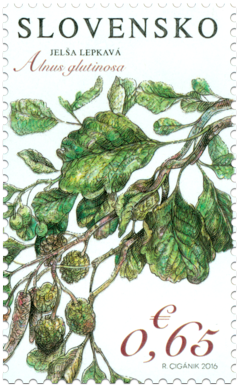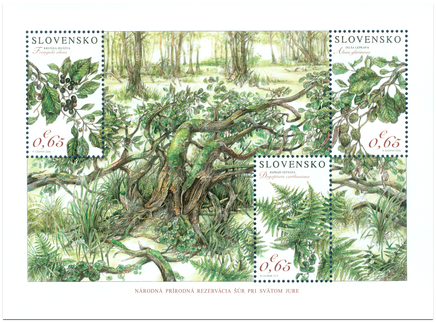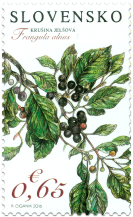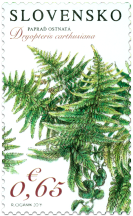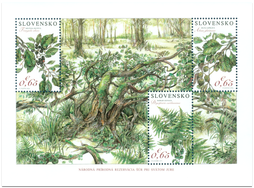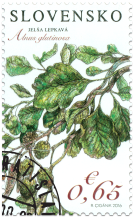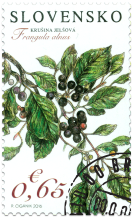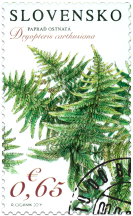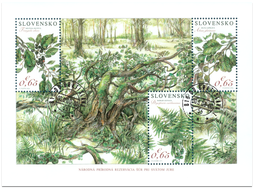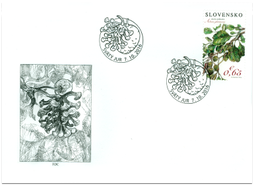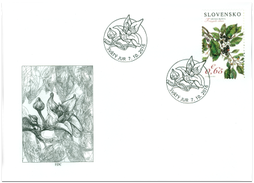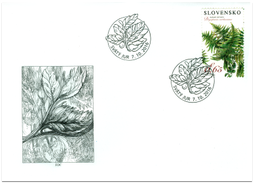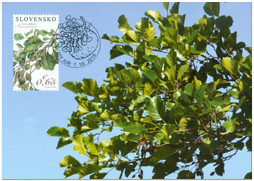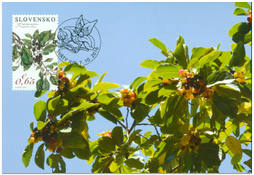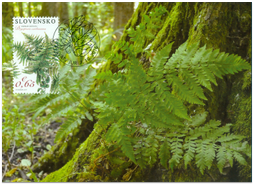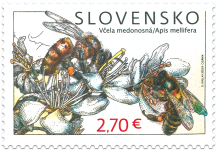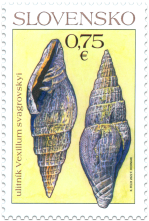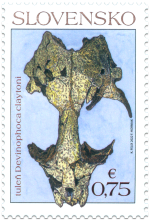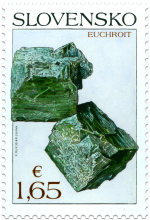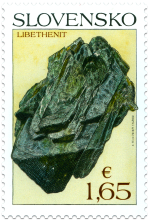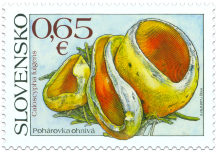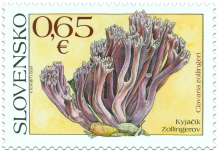This product is not for sale
This product is part of the following products
619 Date of issue
07.10.2016 Face value
0.65 €
The black alder is a widespread species occurring in bottomlands, swamp forests, marsh lands and along the shore; away from water, it occurs at locations with high rainfall. Thus, it depends on water because its leaves do not have any mechanism to control transpiration. The black alder does well in acidic soils. Its occurrence ranges from the plains up to mountainous regions. The common alder can grow to a height of 20-30 m. A characteristic of the black alder is its smooth bark which is, however, cracked at the base of the trunk. Its leaves are nearly orbiculate, cut or slightly wedge-shaped on the top. The catkins appear before the leaves sprout from March to April. The male catkins grow in groups of 2-3; they are pendulous and purple in colour. The fertile female catkins are woody, brown and reminiscent of small cones. The black alder is a tree species that dominates the forest in Šúr near Svätý Jur, where it creates a so-called genuine alder forest. Regular surface floods lasting for more than 6 months are typical of these forests. Here are optimal conditions for the growth of alder. Due to the high level of moisture and presence of mud, the alder root system is closely connected with the soil attributes, thus being relatively shallow. The black alder often has aerial roots that develop into supporting prop roots. It is possible to identify the height of surface floods in the forest according to their size. In addition, the black alder can grow in poor soils due to the symbiosis of roots with nitrogen fixing bacterias of the Frankia genus. The lower part of the alder trunk is sometimes studded with pores, which accelerate the total gas exchange. This is especially important with soils that contain stagnate water low in oxygen. The alder in Šúr rejuvenate quickly and fast growing young trees can absorb tree stumps that decompose quickly and disintegrate. In general, however, the restoration of alder forests is a problem since the seedlings are very susceptible to drought.
Igor Kokavec
© 2024 POFIS - Postal philatelic service. All rights reserved

